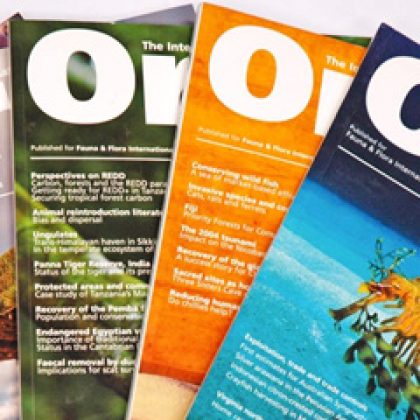Wising up to Caribbean frankincense
David Gill, Guest Editor of the Tree Conservation special issue of Oryx-The International Journal of Conservation, has chosen ‘Making business scents: how to harvest incense sustainably from the globally threatened lansan tree Protium attenuatum‘ as one of his editor’s picks from the issue. In this blog the author, Jenny Daltry, discusses her research in more detail.
Following the edge of the Forest Reserve on the Caribbean island of Saint Lucia, Adams Toussaint pointed to a startling trail of destruction. One tree after another was covered in slashes and cavities. Some had even snapped in two, leaving only a ragged stump. A sweet woody odour hung in the humid air. Adams— a forester and keen naturalist— had studied Protium attenuatum for his Masters degree, and knew something had to be done to save these fragile and valuable trees.
Named from the French l’encens (incense), lansan trees belong to the frankincense family Burseraceae and produce a pungent white resin that makes an excellent incense. The incense is widely used by churches and by many Saint Lucians to ward off mosquitos or evil spirits. Tappers extract the resin by cutting or removing the bark, returning about two weeks later to scrape off the congealed lumps.
Unfortunately, lansan trees are highly prone to decay and careless tapping can swiftly lead to death. Across most of their range in the Eastern Caribbean, these endangered trees have disappeared. Only Saint Lucia and Dominica still have sizeable numbers left, and Saint Lucia’s population is in decline. Resin tapping has long been prohibited on state land, but that has proved difficult to enforce and, besides, nobody wished to deprive poor tappers of an important livelihood.
We posed ourselves the question of whether resin could be harvested without killing the trees. The Global Trees Campaign and Flagship Species Fund kindly sponsored our experimental study, which entailed studying over 370 lansan trees using 10 different methods and carefully monitoring the resin yield and the tree growth and condition. Methods ranged from techniques customarily used by local tappers to ideas borrowed from the resin industry in other parts of the world. Every tree was tapped every two weeks and we monitored its condition closely.
This study was not without challenges. Only a few weeks into the start, a dozen of our study trees were swept away by landslides and our team was cut off for more than a week. Later, the unexpected discovery of endangered but potentially dangerous vipers Bothrops caribbaeus in our study site added a frisson while picking our way from one tree to another. Our team enjoyed working in the forest, however, and as the data accumulated, some interesting patterns started to emerge.
Of the 10 methods tested, one was the clear winner: the application of a weak acidic solution to a simple cut in the bark. This stimulated the trees to produce significantly more resin and yet the trees remained perfectly healthy (the acidic wash may have also helped to disinfect the cuts). In contrast, methods traditionally employed by local tappers were highly damaging. Not only did these trees deteriorate and decay, but disease spread to non-tapped trees nearby.
Following on from this study, a new management plan for Saint Lucia lansan has been developed which sees local tappers becoming professionally trained and licensed to use our recommended, and very productive, method of extraction. Each tapper is being granted an area of forest which they can use and help to protect in cooperation with the Forestry Department. Lansan trees are also being planted as part of post-hurricane reforestation efforts.
These are still early days but thanks to our success in finding an effective and tree-friendly way of harvesting resin, Saint Lucia has the makings of a win-win-win: for the tappers, for the communities who traditionally use incense, and for the conservation of these endangered trees.
Read Jenny Daltry Oryx article in full for free here until the end of 2015.
Access the entire Tree Conservation special issue
Main image credt: Jenny Daltry





